It was supposed to be a temporary affair. When former hospitality executive Anita Belaunde took the Lima-based architects Barclay & Crousse to look at a potential site in the city’s affluent San Isidro district for a new restaurant—a commercial space on the ground floor of a high-rise belonging to her family’s company—they were not impressed. But what did intrigue them was a nearby corner lot with a 1950s tear-down house that Belaunde’s husband, a developer, had purchased with the intent of building an office tower. With little hesitation, he agreed to lend her the site for her endeavor until construction on the larger project could begin.
For her first culinary enterprise, Belaunde envisioned a restaurant that would reflect her passions for cooking and nutrition and embody the essence of this Pacific coastal city and its gastronomy, while taking advantage of the temperate climate here. “The idea was to make a building that complemented the objectives of the restaurant,” says Belaunde, “to be sustainable and promote Peruvian cuisine and health and wellness through dining.”
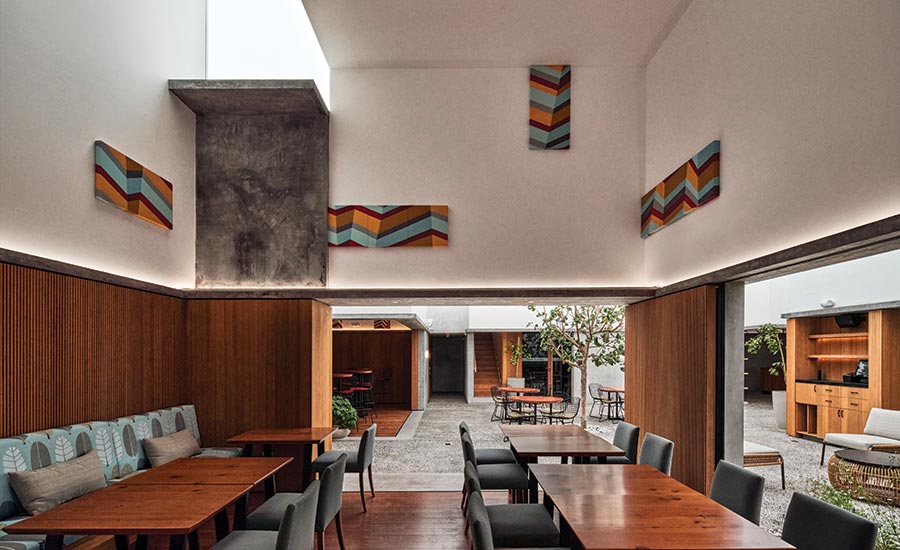
Wide openings in the dining pavilions create a seamless flow to the patio (left). Interiors are spare, with paintings by local artist Mariella Agois. Photo © Cristobal Palma, click to enlarge.
Named Limaná—combining its namesake city and the word manna, or food from heaven—the restaurant sits in a busy residential area, with public buses roaring along Avenida Augusto Pérez Araníbar. To create a cloistered sanctuary along this thoroughfare—and take advantage of the subtropical desert conditions, marked by infrequent rain and mild temperatures year-round—the architects looked to the Colonial courtyard houses in Lima’s historical center. It is a strategy the firm typically employs in projects in this city, such as Casa A4. “Intimacy is the most powerful concept for Limeños,” says Jean Pierre Crousse of these hidden worlds tucked away from the street. Riffing on the typology, the husband-and-wife team designed a walled compound of five identical cube-shaped modules that surround a patio planted with an herb garden and fruit trees.
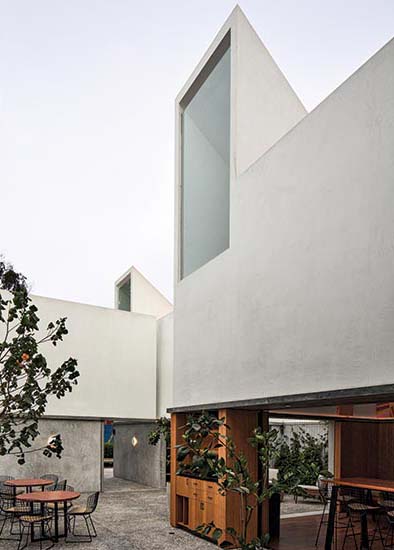
1
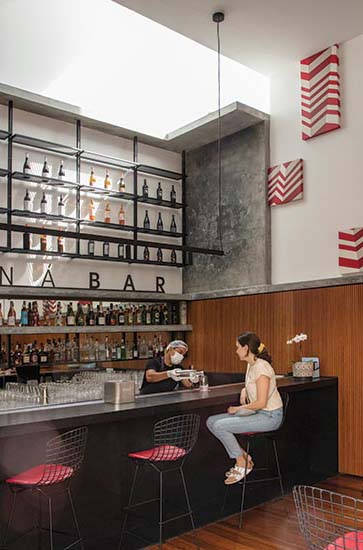
2
Tall, sloping light monitors (1) lend the restaurant its distinct character while providing natural ventilation and carrying daylight into the pavilions, like the one that houses a bar (2). Photos Cristobal Palma (1); courtesy Barclay & Crousse (2)
Referencing the local tradition of skylights called teatinas, the architects topped each of the 430-square-foot pavilions with a prominent sloping light monitor (a move the team used previously in their restaurant Amar de Lima). Partially glazed, partially open, the monitors—oriented either northeast or northwest—carry light into the interiors and, with a chimney effect, provide natural ventilation. (The restaurant does not have heating or air-conditioning.) At night, LED strips embedded in the walls and downlights in the teatinas deliver indirect illumination—there are no visible fixtures. Wide openings in the cubes’ facades create a fluidity between the modules and the patio, blurring the lines between inside and outside and providing diagonal views across the entirety of the compound. The architects point out that these large portals make the whole building open-air and, ironically, create in-between spaces that are more contained than the actual interiors of the pavilions. “You feel more intimate in the exterior spaces and you feel more extroverted in interior spaces,” says Sandra Barclay.
Reflecting Peru’s diversity and the wide range of ways to experience the act of eating, each pavilion offers a different setup: one module contains a shop and snack bar, one has long tables for communal dining, one has a more standard arrangement of individual tables, another has a bar and high tables, and the last hosts private dining. While each is its own discrete space, all the individual pods speak to each other across the central courtyard.
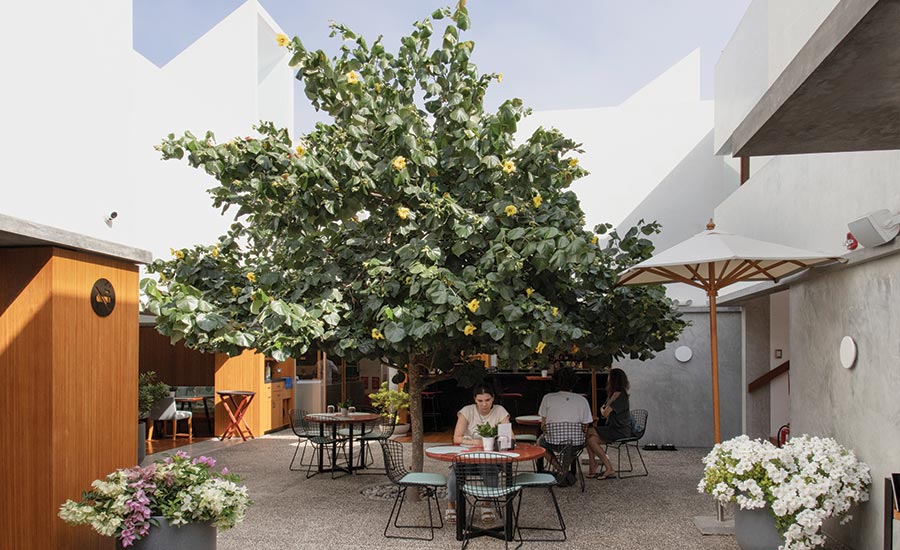
3
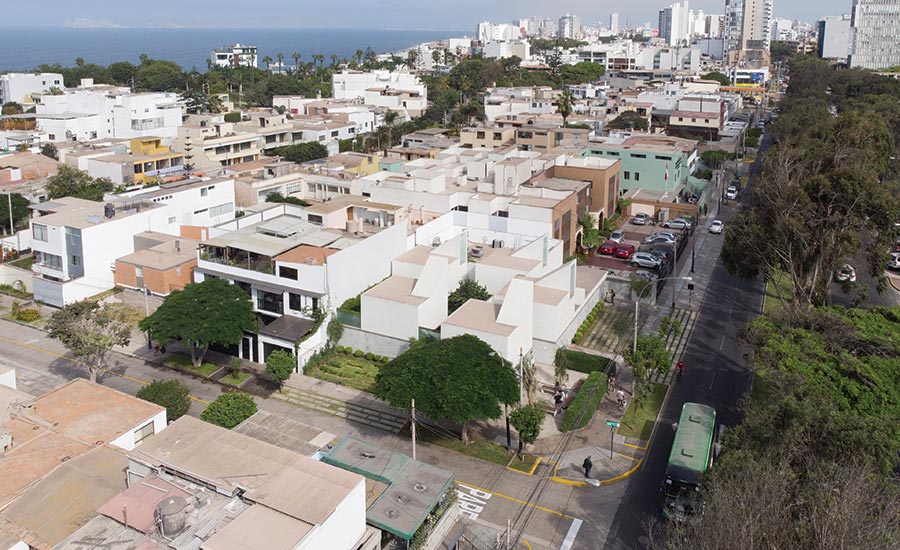
4
The central courtyard (3) is an inner sanctuary, cloistered from the busy Avenida Augusto Pérez Araníbar (4) just outside. Photos courtesy Barclay & Crousse
Because Limaná was envisioned as a provisional structure it was imperative to keep costs down with straightforward building techniques and materials. This strategy was also in keeping with the restaurant’s focus on purity and authenticity in all its ingredients, from those used in the dishes served here—such as coconut ceviche or trout tartare with mango and avocado—to those employed in the construction. The team fabricated the structure of confined masonry, a system where load-bearing brick walls are erected first and concrete columns and beams are poured in afterward to contain the walls, effectively tying them down to the foundation—a method that performs well seismically, critical in this earthquake-prone zone. The base of the masonry wall is coated with a steel-troweled gray-cement plaster, and the top of the wall is coated with a finer grade of white stucco. The team lined the floors and walls inside the pavilions with sustainably sourced bamboo and paved the courtyard with river stones. “Incorporating natural elements is at the core of our thinking,” says Barclay, adding that the approach here was to keep things simple, easy to maintain, with no sophisticated details. “For us,” says Crousse, “the luxury was in the space, in the lighting conditions, and the food.”
The restaurant opened in February 2020, just weeks before the pandemic shut down the world. As bad as the timing was, however, the design, with its hybrid indoor-outdoor spaces, could not have been more auspicious, offering ample open-air dining once Limaná was allowed to resume business with limited occupancy in October (it now is operating at 75 percent capacity). Over the months, as the restaurant made itself at home on the block, Belaunde and her husband decided not to move forward with the office tower after all. “Seeing the beauty of the finished product, it was really impossible to think of demolishing it one day,” she says. As much as anything can be sure these days, it looks as if Limaná is here to stay.
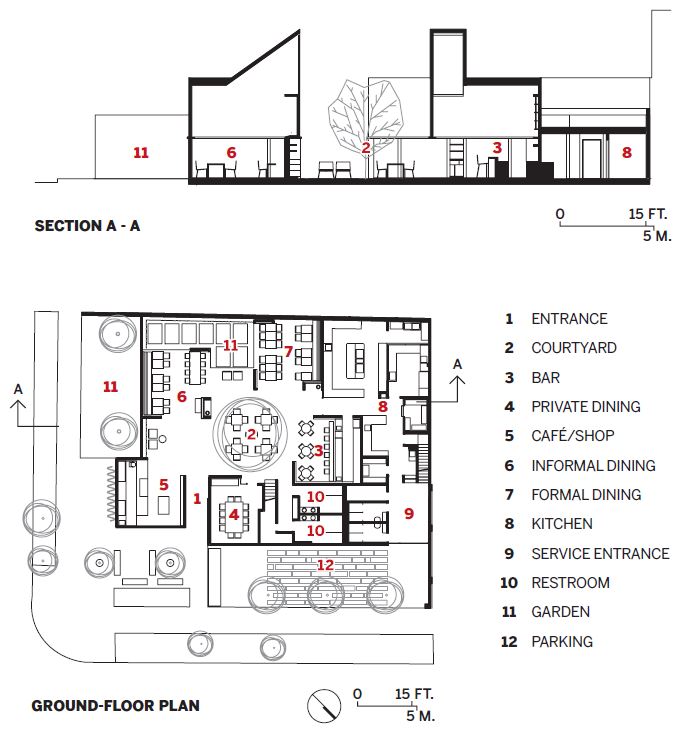
Click drawings to enlarge
Credits
Architect:
Barclay & Crousse Architecture — Sandra Barclay, Jean Pierre Crousse, principals; Andrea Otero, design lead
Engineers:
Jorge Avendaño (structural); Ana Torres (electrical); Alex Avalos (mechanical)
Consultants:
Studio A (graphic design); Lourdes Giusti (security); Laboratorio Gastronómico (kitchen); Equipo G (plumbing); Lima Sound (acoustics); Hilite (lighting)
General Contractor:
Kam Sau
Client:
Grupo Crosland
Owner:
Anita Belaunde
Size:
4,450 square feet
Cost:
Withheld
Completion Date:
January 2020




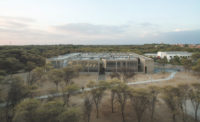

Post a comment to this article
Report Abusive Comment